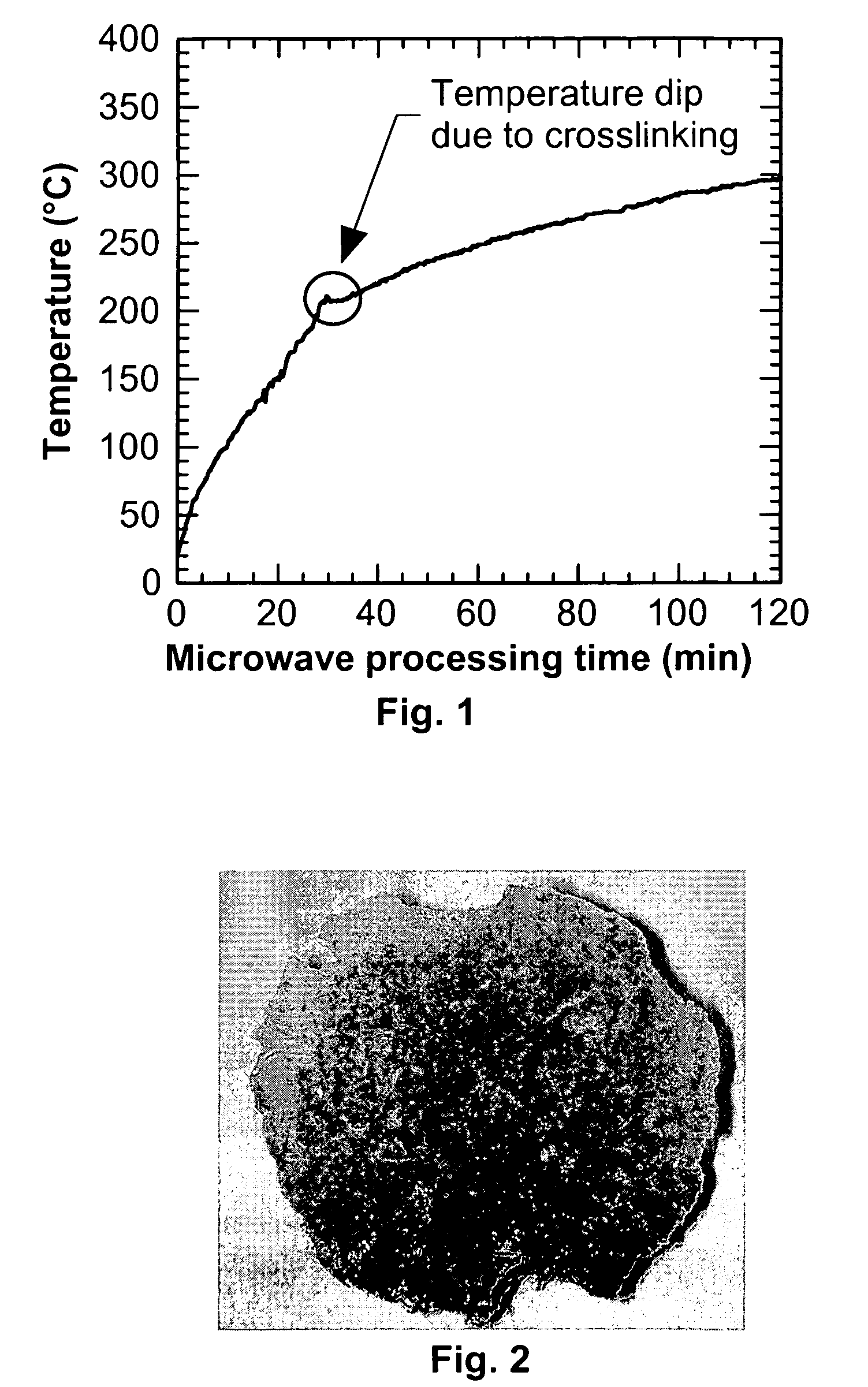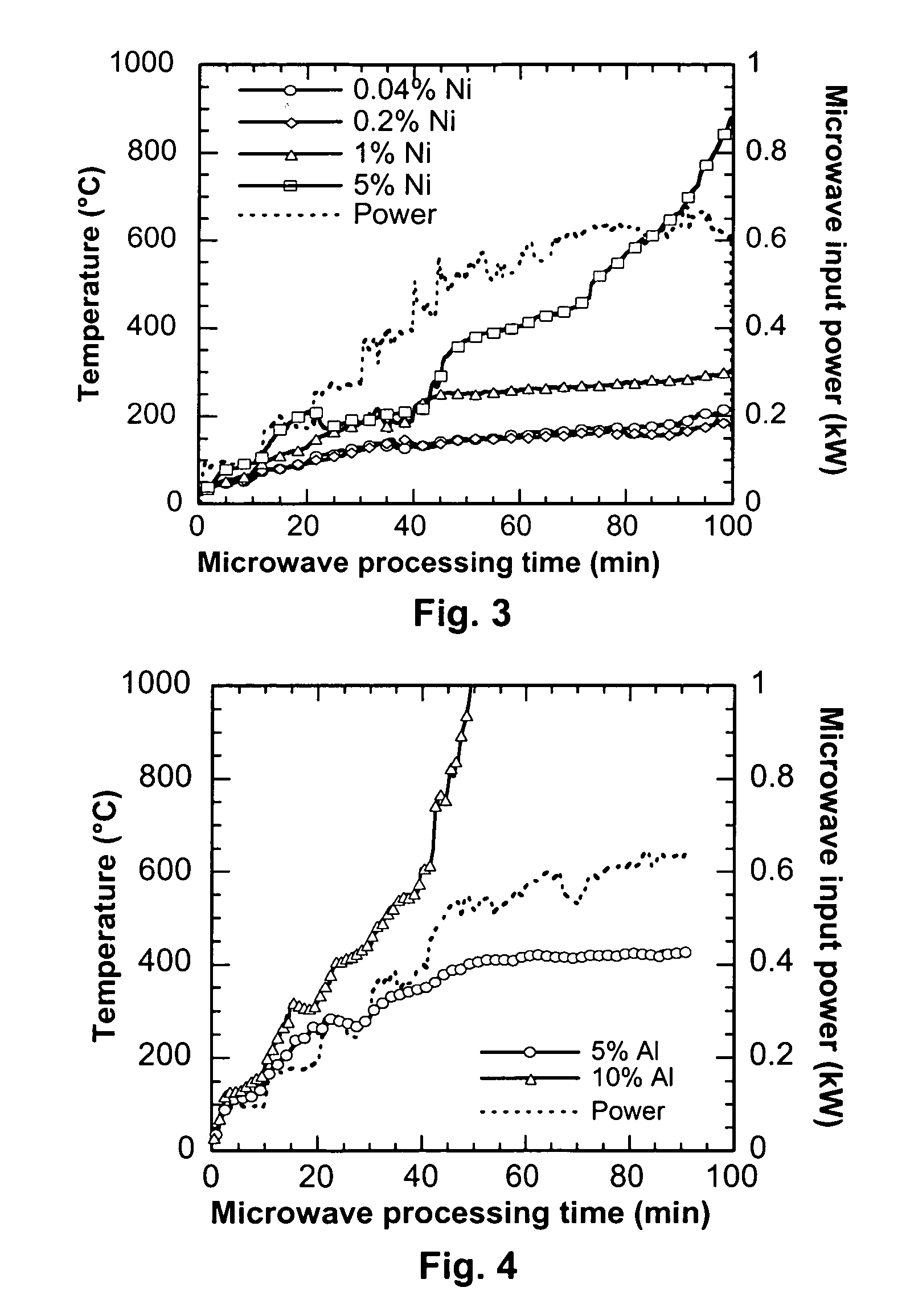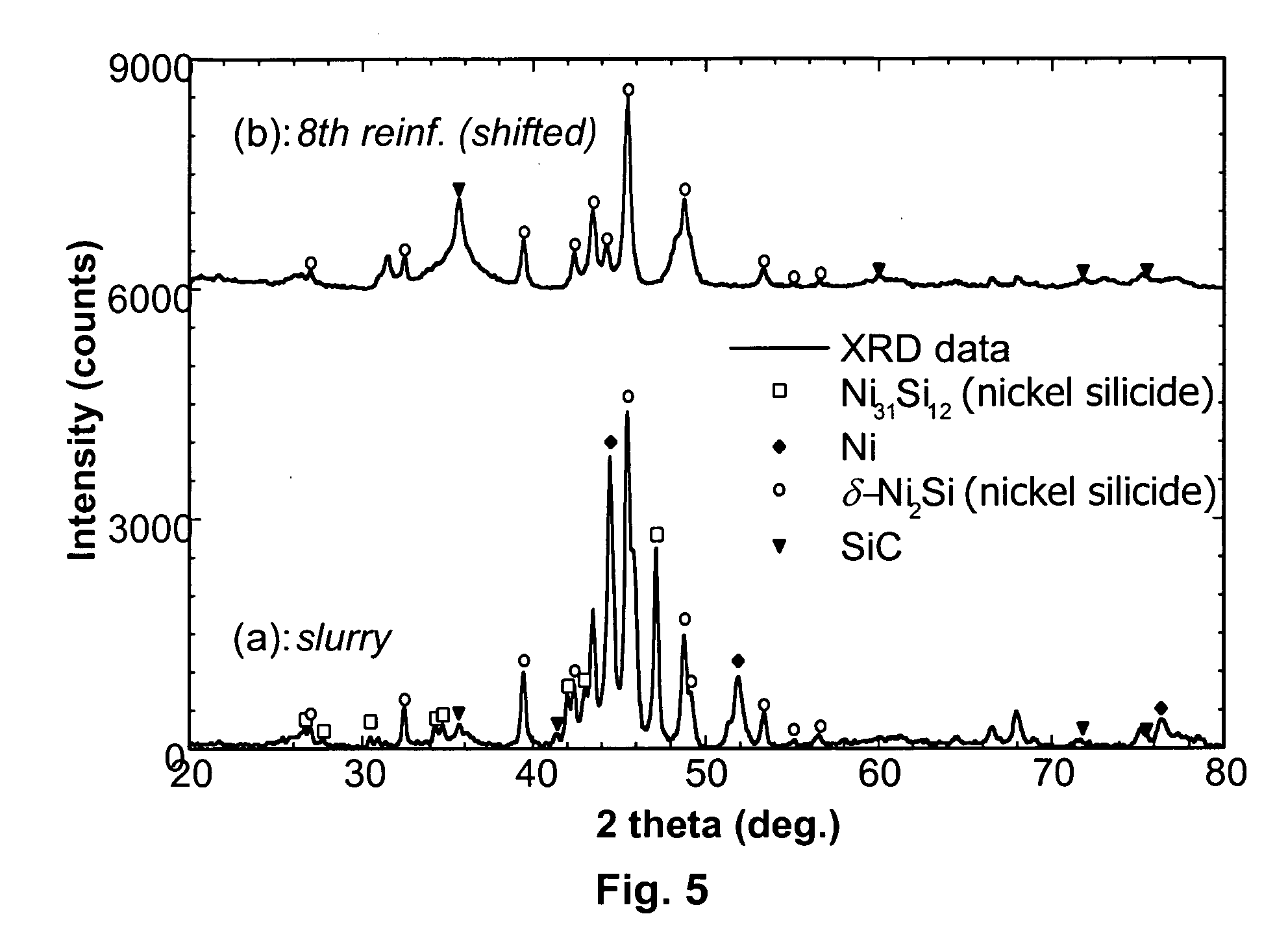Method for preparing metal ceramic composite using microwave radiation
- Summary
- Abstract
- Description
- Claims
- Application Information
AI Technical Summary
Benefits of technology
Problems solved by technology
Method used
Image
Examples
example 1
[0027] This example demonstrates microwave-induced pyrolysis of the preceramic polymer using 80 nm sized nickel particles.
[0028] A powder of 80 nanometer diameter nickel particles was suspended in 5 grams of preceramic polymer of silicon carbide at substantial volume fractions ranging from 0.04% to 5%, and then subjected to microwave processing. The preceramic polymer for silicon carbide employed is the SP-matrix precursor from Starfire Systems, Inc. (Malta, N.Y.). The SP-matrix polymer is an allylhydridopolycarbosilane, which is an amber liquid with a viscosity of 80-150 cps at 20° C. This polymer is cured by a cross-linking process at a temperature of 150-400° C. to form a green body, and is pyrolyzed at about 800° C. to form fully ceramic, amorphous SiC, and yields nanocrystalline SiC at about 1250° C. The SP-matrix preceramic polymer is a commercially available ultra-high purity precursor for fabricating silicon carbide while providing a high ceramic yield.
[0029] The power rou...
example 2
[0030] This example demonstrates microwave-induced pyrolysis of the preceramic polymer using 17-23 μm sized aluminum particles. A powder of 17-23 μm diameter aluminum particles was suspended in 5 grams of the preceramic polymer of silicon carbide at volume fractions 5% and 10%, and then subjected to microwave processing. The preceramic polymer for silicon carbide employed is the SP-matrix precursor from Starfire Systems, Inc. (Malta, N.Y.).
[0031] The power control employed was 10 min. at 90 W, 10 min. at 180 W, 10 min. at 260 W, 60 min. at 320-620 W, and 10 min. at 620 W. FIG. 4 illustrates the variation of temperature as a function of time for the various slurries tested, where a volume fraction of 10% for 17-23 μm aluminum particles is sufficient for the active seeding of the preceramic polymer to pyrolyze.
example 3
[0032] In this example, the resulting pyrolyzed foam prepared from Example 1 was ground using a planetary ball mill in a tungsten carbide bowl (WC) with 10 mm WC balls for 5 minutes. The resulting powder consisted of the active nickel filler which was well dispersed in amorphous silicon carbide (α-SiC). Then, the powder was mixed with small quantities of the polymer precursor and compacted under a pressure 90 MPa to form φ25×30 mm preforms. The compression press is preferably setup inside an argon glove box for compacting under an inert atmosphere.
[0033] The preforms were heated in the microwave oven using the same power control as described above, which completely pyrolyzed the polymer precursor. The pyrolyzed preforms were reinfiltrated with the liquid polymer followed by curing and pyrolyzing to increase material density for a total of eight cycles.
[0034] The fabricated materials were analyzed using powder X-ray diffraction (XRD). The measurements can identify crystalline speci...
PUM
| Property | Measurement | Unit |
|---|---|---|
| Fraction | aaaaa | aaaaa |
| Frequency | aaaaa | aaaaa |
| Dielectric polarization enthalpy | aaaaa | aaaaa |
Abstract
Description
Claims
Application Information
 Login to View More
Login to View More - R&D
- Intellectual Property
- Life Sciences
- Materials
- Tech Scout
- Unparalleled Data Quality
- Higher Quality Content
- 60% Fewer Hallucinations
Browse by: Latest US Patents, China's latest patents, Technical Efficacy Thesaurus, Application Domain, Technology Topic, Popular Technical Reports.
© 2025 PatSnap. All rights reserved.Legal|Privacy policy|Modern Slavery Act Transparency Statement|Sitemap|About US| Contact US: help@patsnap.com



